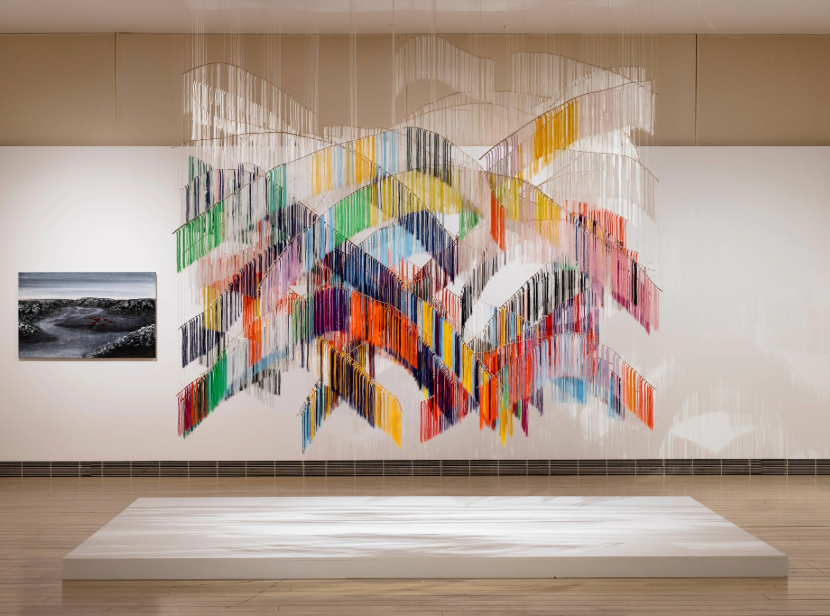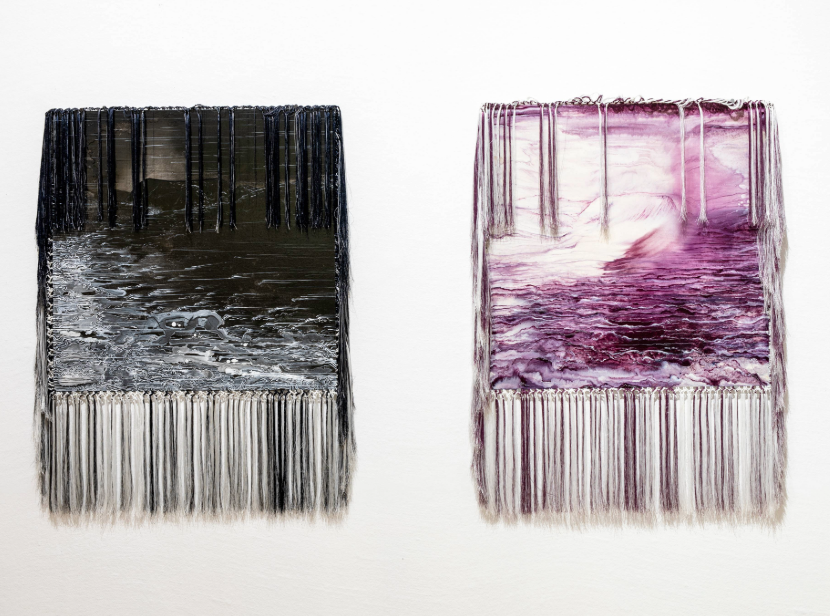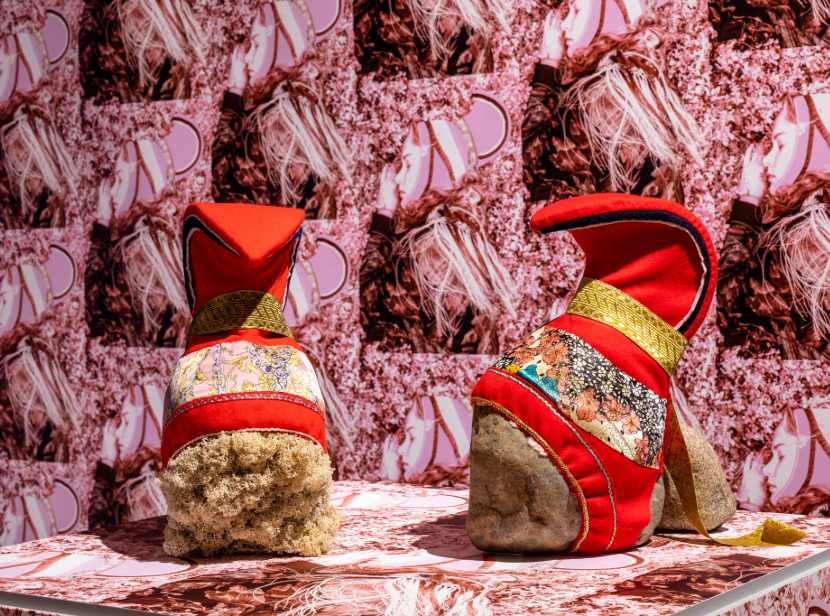Eatnamastit
Malmö Konstmuseum presents the most comprehensive exhibition in Sweden of the Sámi artist Outi Pieski.
.png)
Installation view: Outi Pieski, Min eana, min ivnniiguin, 2015. Foto: Helene Toresdotter/Malmö Konstmuseum
The artist Outi Pieski is based in Ohcejohka (Utsjoki), Finland, in northern Sápmi - the ancestral land of the Sámi people, who have lived there for thousands of years, long before today’s national borders. In her work, Pieski addresses Sámi history, philosophy, and culture, and how these continue to shape Sámi life today.
The exhibition at Malmö Konstmuseum is the most extensive presentation of her work in Sweden to date. It features around fifty pieces that together offer a multifaceted picture of her artistic practice. Through painting, photography, textile, video, printmaking, and installations, she explores the relationship between humans and nature.
For Outi Pieski, the act of creating art is deeply personal, it strengthens the connection to the landscape and nature both within and around us. From a Sámi perspective, humans do not exist above nature but are in a position of mutual dependence, we coexist with all living beings in reciprocal respect. Nature is viewed as an interconnected system, where all beings, both visible and invisible, are related and reliant upon one another.
Her works are rooted in the Sámi craft tradition known as duodji, a holistic concept that unites Sámi philosophy, values, and spirituality with practical and traditional knowledge. When the Sámi people were prohibited from practicing their spirituality, craft became a form of resistance, spiritual symbols were hidden within the making. Duodji is a collective way of creating, strengthening ties between people, across generations, and with nature. For Pieski, working with duodji is a method for healing intergenerational trauma and for reaffirming the bond with the landscape and all living things. She uses the term “radical softness” to describe how duodji embraces vulnerability, honesty, sensitivity, and community.
The exhibition’s title, Eatnamastit, is drawn from a new work created specifically for this presentation. The term can be described as the act of grounding and anchoring oneself in nature. A recurring theme throughout the exhibition is the landscape around her home region, both as subject matter and as a source of inspiration and identity. In Pieski’s art, the landscape embodies the lived experiences and memories of both her own and earlier generations.
With a background from the Academy of Fine Arts in Helsinki (2000), Pieski has established herself as one of the most prominent artists from Sápmi. She has had solo exhibitions at, among others, Tate St Ives (2024), Sámi Museum Siida (2023), Bonniers Konsthall (2022), and EMMA in Espoo (2018). Her work has also been featured in group exhibitions at Tate Modern (2025) and MARKK, Hamburg (2023–24), as well as in major international biennials including the Venice Biennale (2019), Gwangju Biennale (2021), Biennale of Sydney (2022), and GIBCA – Göteborg International Biennial for Contemporary Art (2023).
The exhibition at Malmö Konstmuseum is curated by Anna Johansson and Marcus Pompeius.
.png)
Outi Pieski, Nuvvos Áilegas, seavdnjes, (2011) och Nuvvos Áilegas, českes, 2011. Foto: Helene Toresdotter/Malmö Konstmuseum
.jpeg)
Outi Pieski, Litna máttaráhkku, 2021 och Lossa máttaráhkku, 2021. Foto: Helene Toresdotter/Malmö Konstmuseum
Kontakta oss
Malmö Konstmuseum
- E-post:
- malmokonstmuseum@malmo.se
- Telefon:
- 040-34 10 00
- Postadress:
- Malmö stad Malmö Konstmuseum 205 80 Malmö
Sidan senast uppdaterad:
